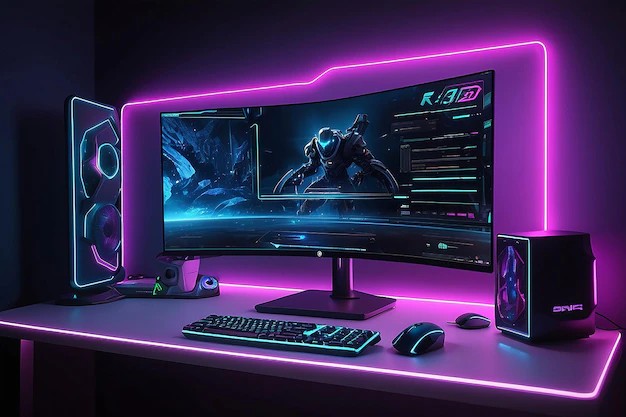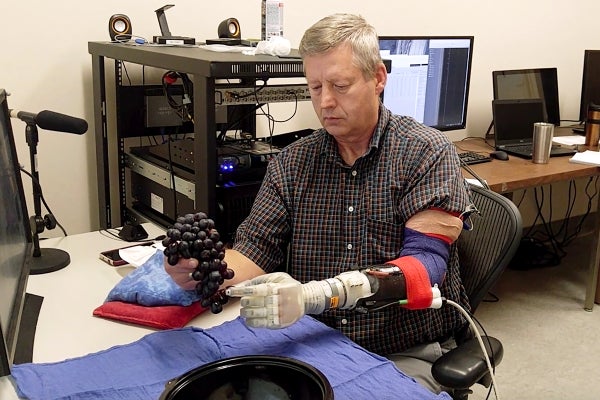
Leveling Up the Narrative: How GPT Models Are Revolutionizing Gaming News and Content Creation
The global gaming industry is a behemoth of rapid innovation, where news cycles are measured in hours, not days. From surprise game announcements and sudden patch drops to sprawling community discussions and developer interviews, the demand for timely, engaging, and accurate content is relentless. Into this high-stakes arena steps a new player: Generative Pre-trained Transformer (GPT) models. The latest advancements in AI, from OpenAI’s GPT-4 to a growing ecosystem of competitors, are no longer theoretical concepts but practical tools poised to fundamentally reshape the gaming news landscape. This technology offers unprecedented opportunities for automation, personalization, and efficiency, empowering everyone from solo indie developers to major media outlets. However, its integration also raises critical questions about journalistic integrity, authenticity, and the future role of human creativity. This article explores the comprehensive impact of GPT in gaming news, delving into the technical mechanisms, real-world applications, ethical considerations, and the exciting future that lies ahead.
The New Playbook: GPT’s Expanding Role in Gaming Journalism and Media
The application of GPT models in the gaming media ecosystem extends far beyond simply writing articles. It represents a paradigm shift in how content is conceptualized, created, distributed, and managed. This technology is becoming a versatile toolkit for publishers, marketers, and community managers, automating tedious tasks and unlocking new strategic capabilities. The latest GPT-4 News highlights models that are not just text-based but are increasingly multimodal, capable of understanding and interpreting images and data, further broadening their utility.
Automated Content Generation and Augmentation
One of the most immediate applications is in content generation. GPT models can instantly process vast amounts of information and synthesize it into coherent text. For gaming news, this has several powerful use cases:
- Patch Note Summaries: A lengthy, technical list of patch notes for a game like Cyberpunk 2077 or Baldur’s Gate 3 can be fed into a GPT model to generate a concise, easy-to-read summary for players, highlighting the most impactful changes.
- Game Previews: By providing a model with a press kit, developer blogs, and initial gameplay descriptions, it can draft a comprehensive preview article. This draft serves as a solid foundation for a human journalist to refine, fact-check, and inject with personal insight and analysis. This is a key area discussed in GPT in Content Creation News.
- Data-Driven Articles: GPT can analyze player statistics, sales figures, or esports results to generate data-rich articles, such as “Top 5 Most-Used Weapons in Season 4” or “Market Trends in the RPG Genre.”
Marketing and PR Amplification
For game developers, especially smaller indie studios, marketing is a significant hurdle. GPT models can level the playing field. The latest GPT in Marketing News showcases how AI can act as a force multiplier for lean teams. A developer can use a model like ChatGPT to generate a full suite of marketing materials from a single game description: press releases tailored to different outlets, engaging social media posts for Twitter, Instagram, and TikTok, compelling email newsletter copy, and even scripts for promotional videos. This dramatically reduces the time and cost associated with a professional marketing campaign.
Community and Feedback Analysis
Modern gaming thrives on community engagement. However, moderating large forums, Discord servers, and Reddit threads can be overwhelming. As part of emerging GPT Agents News, AI-powered systems can be deployed to handle first-line moderation, filtering spam and toxicity. More profoundly, they can perform sentiment analysis on thousands of player comments, summarizing key feedback points, identifying common bugs, and highlighting the features players love or hate most. This provides developers with actionable insights from their community at a scale that was previously impossible.
Under the Hood: The Technology Powering the Media Shift

To truly appreciate the impact of GPT, it’s essential to understand the technology that enables these applications. It’s not a single, monolithic entity but a complex ecosystem of models, APIs, and training techniques that allow for tailored and sophisticated solutions. The rapid evolution detailed in OpenAI GPT News and GPT Competitors News is driving this innovation forward.
From GPT-3.5 to GPT-4 and Beyond: An Evolution in Capability
The leap from GPT-3.5 to GPT-4 was not merely incremental; it represented a significant jump in reasoning, context understanding, and accuracy. The latest GPT Architecture News points to even larger and more efficient models on the horizon. A key development is multimodality, a core topic in GPT Multimodal News. With GPT Vision News confirming these capabilities, a model can now “see.” For gaming, this means it can analyze a gameplay screenshot to describe the UI, interpret the art style, or even watch a game trailer and generate a shot-by-shot description, identifying key characters and action sequences. This opens up new avenues for creating richer, more descriptive content automatically.
The Power of APIs and Fine-Tuning: Creating a Unique Voice
Off-the-shelf models like ChatGPT are powerful, but their true potential is unlocked through customization. The GPT APIs News reveals a thriving ecosystem where developers can integrate these models into their own applications. For a gaming news outlet, this is transformative. Using the API, they can build internal tools for their journalists. Furthermore, GPT Fine-Tuning News highlights the ability to train a base model on a specific dataset. A publication like IGN or Kotaku could fine-tune a GPT model on its entire archive of articles. This process, a key part of GPT Training Techniques News, would create a GPT Custom Model that inherently understands and replicates the publication’s unique tone, style, and formatting, ensuring brand consistency even in AI-assisted content.
GPT Agents and Workflow Automation
The next frontier is the development of autonomous agents. As covered in GPT Agents News, these are AI systems that can perform multi-step tasks without constant human intervention. Imagine a “Gaming News Agent” for an indie developer. Its workflow could be:
- Monitor Steam’s upcoming releases feed for new games in the “roguelike” genre.
- When a new, highly-rated game is detected, gather information from its store page, community hub, and official website.
- Use a GPT Code Model to analyze any publicly available data about the game’s engine or tech stack.
- Draft a “New Game Spotlight” article and a series of social media posts.
- Place these drafts in a folder for a human editor to review and approve.
The Broader Impact: Reshaping the Gaming Media Landscape
The integration of GPT technology is not just a change in tools; it’s a catalyst for structural shifts within the gaming industry. It affects the balance of power between developers, influences the role of journalists, and introduces a new layer of ethical considerations that must be carefully navigated.
Empowering Independent Developers and Small Studios
Perhaps the most significant positive impact is the democratization of communication. AAA studios have massive marketing and PR departments. An indie developer, often a one-person team, does not. GPT acts as a virtual marketing assistant, enabling them to produce professional-quality press releases, manage social media, and engage with their community effectively. This helps smaller, innovative games get the visibility they deserve, fostering a more diverse and vibrant gaming ecosystem. This trend is a major focus of GPT Applications News, showing how AI can lower barriers to entry in creative fields.

The Changing Role of the Gaming Journalist
Fears that AI will replace journalists are often misplaced. Instead, GPT is likely to augment their roles. The mundane, time-consuming tasks of summarizing press releases or transcribing interviews can be offloaded to AI. This frees up journalists to focus on what humans do best: critical analysis, investigative reporting, building relationships with sources, conducting nuanced interviews, and providing unique, experience-driven perspectives in game reviews. The journalist of the future may be more of an “AI editor” or “content strategist,” using GPT as a powerful research and drafting assistant while retaining full editorial control and providing the final layer of insight and verification.
Ethical Considerations and Navigating Pitfalls
With great power comes great responsibility. The rise of GPT in news generation brings significant ethical challenges that the industry must address. The latest GPT Ethics News and GPT Regulation News are filled with debates on these topics.
- Authenticity and Disclosure: Should outlets disclose when an article was assisted by AI? Transparency is key to maintaining reader trust.
- Bias and Fairness: AI models are trained on vast datasets from the internet and can inherit human biases. GPT Bias & Fairness News reports on ongoing efforts to mitigate this, but a model could inadvertently favor certain genres or developer types if not carefully managed.
- Misinformation: A poorly supervised GPT model could “hallucinate” facts, creating incorrect information about a game’s features or release date. Rigorous fact-checking by humans remains non-negotiable.
- Quality Control: Over-reliance on AI could lead to a flood of generic, soulless content that lacks the passion and personality that gamers value.
Best Practices and Future Projections
Successfully integrating GPT technology requires a thoughtful strategy, not a blind adoption. As we look toward the future, the capabilities of these models will only grow, making it crucial to establish a solid foundation today.
Practical Implementation: Tips for Success

For any organization—be it a news outlet or a game studio—looking to leverage GPT, here are some actionable best practices:
- Start Small: Begin with low-risk, high-impact tasks. Automate patch note summaries or first drafts of press releases before moving to more complex content.
- Establish Clear Guidelines: Create an editorial policy for AI usage. Define when it can be used, how it should be supervised, and what the disclosure requirements are.
- Emphasize the Human-in-the-Loop: Treat GPT as an assistant, not an author. Every piece of AI-generated content intended for publication must be reviewed, edited, and approved by a human expert.
- Invest in Training: Teach your team how to write effective prompts and how to critically evaluate AI output. This is a new skill set that will become increasingly valuable.
The Road Ahead: What to Expect from GPT-5 and Beyond
The pace of AI development is staggering. Looking at the current GPT Trends News, we can project what the future holds. The much-anticipated GPT-5 News suggests models with even more advanced reasoning and near-human conversational abilities. In the context of gaming news, this could lead to:
- Personalized News Feeds: AI agents that curate a unique news feed for each gamer based on their specific interests, play history, and favorite genres.
- Real-Time Event Coverage: During a live event like E3 or The Game Awards, an AI could provide a real-time text commentary, generate instant summaries of announcements, and even create highlight clips using multimodal analysis.
- Interactive Interviews: Imagine an AI-powered chatbot, trained on a developer’s entire history of interviews and blog posts, that could answer common fan questions 24/7, freeing up the developer for more in-depth interactions.
Conclusion
The integration of GPT models into the world of gaming news is not a distant future; it is happening now. From automating content creation and supercharging marketing for indie developers to providing deep community insights, the applications are as diverse as they are powerful. While this technological shift brings immense opportunities for efficiency and scale, it also demands a renewed commitment to journalistic ethics, authenticity, and the irreplaceable value of human insight. The organizations that will thrive in this new era are not those that simply replace human tasks with AI, but those that learn to create a powerful synergy between them. GPT is the new co-op partner for the gaming media industry—a tool that, when wielded wisely, can help us all level up the way we create, share, and engage with the stories of the games we love.



